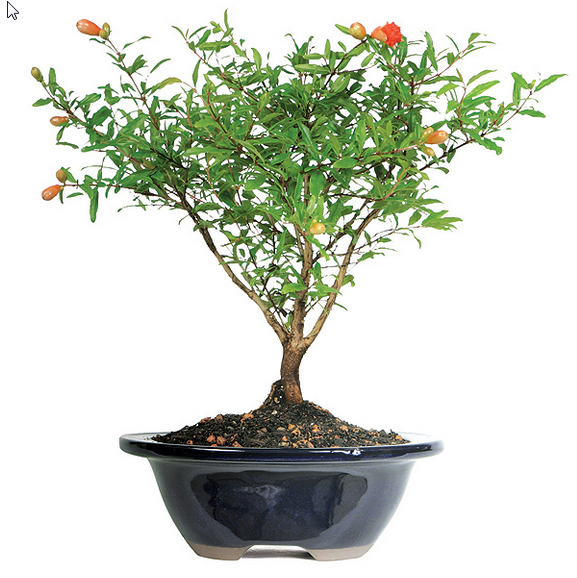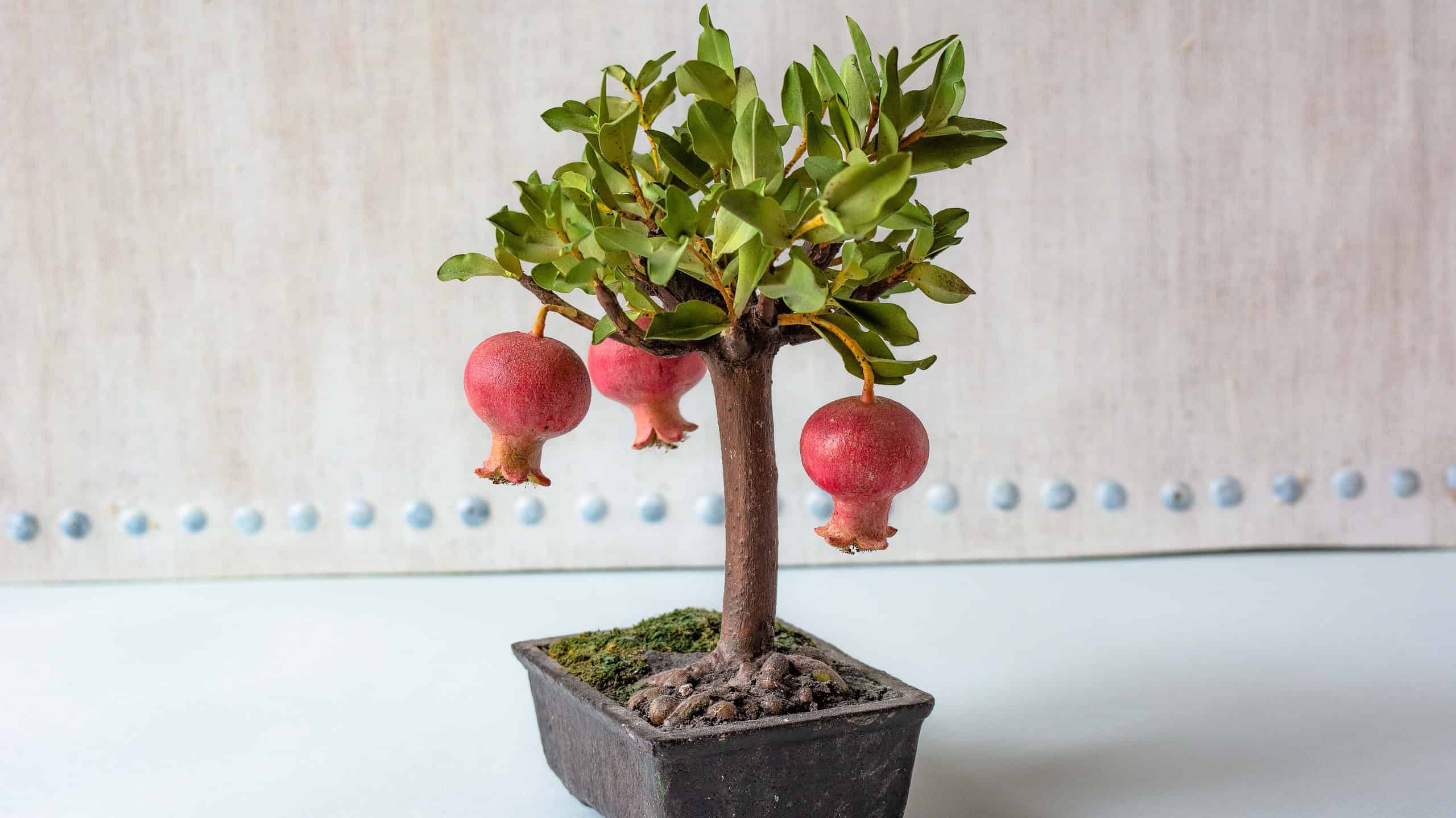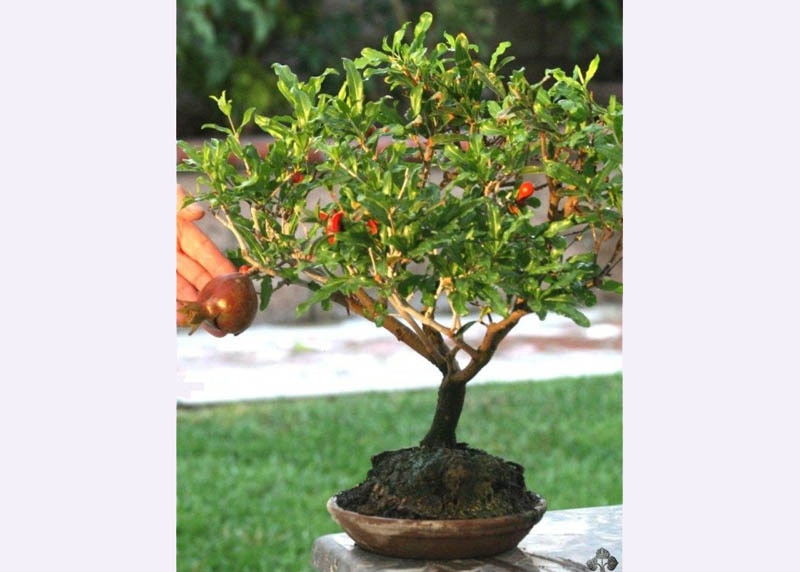Pomegranate bonsai trees need full sunlight and well-drained soil. Water regularly and prune to maintain shape.
Pomegranate bonsai trees, with their vibrant flowers and fruits, make a stunning addition to any garden or indoor space. These miniature trees thrive in full sunlight and require well-drained soil to flourish. Regular watering is essential, but avoid overwatering to prevent root rot.
Pruning is crucial to maintain the tree’s shape and encourage healthy growth. These trees are relatively easy to care for, making them perfect for both beginners and experienced bonsai enthusiasts. Their resilience and beauty make pomegranate bonsai a delightful and rewarding hobby. With proper care, these bonsai trees can live for many years, providing endless joy and aesthetic appeal.

Credit: www.bonsaioutlet.com
Introduction To Pomegranate Bonsai
The pomegranate tree comes from ancient Persia. It has been cultivated for over 3,000 years. This tree symbolizes fertility and prosperity. Ancient Egyptians used pomegranates in their art. Greek mythology mentions it as a symbol of life and death. The tree spread to Asia and Europe through trade.
Pomegranate bonsai have vibrant red flowers. They produce small fruits that are edible. The leaves are small and glossy. This tree has a twisted trunk and gnarled branches. It can grow in various climates. The pomegranate bonsai is hardy and drought-resistant. It prefers full sun and well-drained soil. This bonsai can live for many years with proper care.
Choosing The Right Pomegranate Bonsai
Punica granatum is the most common type. It has vibrant red flowers. Dwarf varieties are also popular. They are easier to manage. Nana and Provence are popular dwarf types. They have smaller leaves. These are perfect for small spaces.
Look for bright green leaves. Avoid plants with yellow or brown spots. Check the roots. They should be white and firm. Inspect the trunk. It should be smooth and free of cracks. A healthy plant has a strong smell. This indicates good health.
Ideal Growing Conditions
A pomegranate bonsai tree needs full sunlight to thrive. Place it in a sunny spot where it gets at least 6 hours of direct light each day. Insufficient light can lead to poor growth and fewer flowers. Rotate the tree occasionally to ensure even growth on all sides.
The ideal temperature range for a pomegranate bonsai tree is between 60-75°F (15-24°C). It can tolerate higher temperatures but needs more frequent watering. In winter, keep the tree above 50°F (10°C) to prevent damage. Humidity levels should be moderate. Use a humidity tray or mist the tree if the air is dry.
Soil And Potting Mix
Pomegranate bonsai trees need well-draining soil. Sandy loam soil works best. This soil type prevents root rot. A mix of organic compost and sand also works well. It retains the right amount of moisture. Avoid clay soils as they hold too much water.
Choose a pot with drainage holes. These holes prevent water from pooling. The pot should be shallow but wide. This allows roots to spread. Fill the pot with your chosen soil mix. Place the tree gently. Cover the roots with more soil. Press down lightly to secure the tree. Water the tree immediately after potting.
Watering And Fertilizing
The pomegranate bonsai tree needs regular watering. Ensure the soil is always slightly moist. Avoid letting the soil dry out completely. Water the tree thoroughly until water drains out of the pot. Watering in the morning is best. Check the soil daily to maintain proper moisture levels.
Use a balanced fertilizer for the pomegranate bonsai. A fertilizer with equal parts nitrogen, phosphorus, and potassium works well. Fertilize the tree every two weeks during the growing season. Reduce fertilizing in winter. Over-fertilizing can harm the tree. Always follow the instructions on the fertilizer package. Organic fertilizers are a good choice.

Credit: a-z-animals.com
Pruning And Shaping
Use sharp tools to prune the pomegranate bonsai. Trim dead or diseased branches first. Cut back long shoots to maintain shape. Remove suckers growing from the base. Keep the canopy open for air flow. Always prune during the growing season. Avoid heavy pruning in winter.
Wire branches to guide their growth. Wrap wire around young branches carefully. Bend them to the desired shape. Remove the wire after a few months. Regularly check for wire marks on the bark. Clip leaves to reduce size and improve form. Focus on a balanced look for the tree.
Pest And Disease Management
Aphids, spider mites, and whiteflies often attack pomegranate bonsai trees. These pests suck the sap from the leaves. This weakens the tree and can cause stunted growth. Regularly check your bonsai for any signs of pests. Use insecticidal soap or neem oil to treat infestations. Maintain good air circulation around the tree to prevent pests. Clean fallen leaves and debris from the soil to reduce pest habitat.
Fungal infections are common in pomegranate bonsai trees. Ensure proper watering and drainage to avoid root rot. Water the tree at the base to keep leaves dry. Use a balanced fertilizer to keep the tree healthy. Pruning helps to increase air circulation and reduce disease risk. Remove any diseased leaves or branches promptly. Regularly inspect your bonsai for any signs of disease.
Seasonal Care Tips
Protect your pomegranate bonsai from frost. Bring it inside or use a greenhouse. Water less in winter. Keep the soil slightly dry. Use a humidity tray to maintain moisture. Ensure adequate light by placing it near a window. Avoid drafts and sudden temperature changes. Prune dead branches to encourage growth. Watch for pests and treat immediately.
Water your bonsai regularly in summer. The soil should be moist but not soggy. Place it in a spot with partial shade. Too much sun can damage the leaves. Use a balanced fertilizer once a month. Trim new growth to maintain shape. Check for pests and diseases frequently. Repot if needed to provide fresh soil. Ensure good air circulation around the tree.
Repotting And Root Care
Repot a pomegranate bonsai tree every 2-3 years. Do this in early spring. Choose a pot that is slightly larger than the current one. This gives the roots more room to grow. Ensure good drainage in the new pot. Use fresh soil to provide nutrients.
Root pruning helps the tree stay small and healthy. Use clean, sharp scissors to trim the roots. Cut away about one-third of the roots. Do this during the repotting process. This encourages new root growth. Always be gentle to avoid damaging the roots.

Credit: www.bonsaiempire.com
Conclusion
Caring for a pomegranate bonsai tree is rewarding. Follow the tips shared to keep your tree healthy. Regular watering, proper sunlight, and pruning are essential. With patience and dedication, your bonsai will flourish. Enjoy the beauty and tranquility it brings to your space.
Happy gardening!

